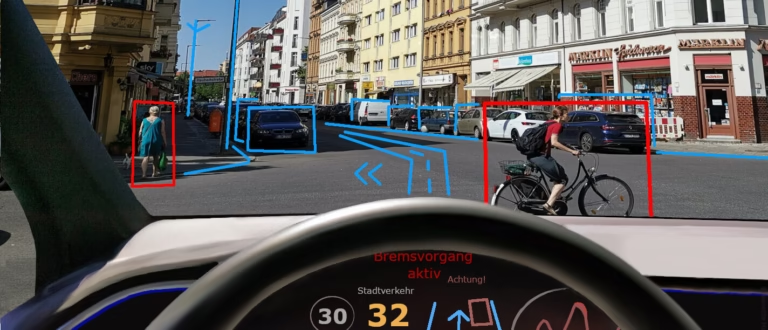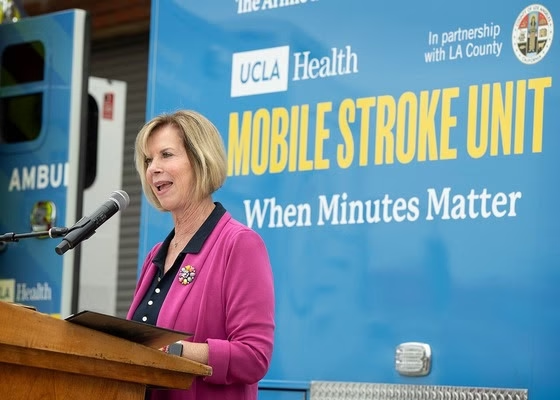Trump is starting to lose big, from courtrooms, to the press increasingly calling him out, to millions of Americans showing up in the streets every few weeks. As anybody who’s ever lived or worked in an autocratic state (I have) can tell you, a strongman or wannabe dictator is most dangerous when he’s on his back foot.
Trump’s tariffs have put America on the verge of a serious inflationary recession, the Supreme Court and multiple lower courts have repeatedly ruled against him, his public approval polling is in the crapper, and even conservative publications and former Republican politicians (free from the strictures of an upcoming primary) are openly calling him out (including in Murdoch publications).
The first lesson they teach in dictator school is that “there must be an enemy within.” Trump embraced this from the first day of his campaign for president when he attacked “Mexican rapists and murderers” he said were “invading” America.
In the years since, his enemies list has grown to include trans students, drag queens, Black protestors, Black legislators, majority-Black “shithole countries,” teachers, colleges, scientists, public health officials, Democrats, and NATO.
The second is that “big, splashy attacks on the country are excellent opportunities to gain popularity and seize more power.”
Just ask George W. Bush.
After his brother Jeb, then governor of Florida, purged 57,000 Black voters from that state’s voter rolls, George “won” the 2000 election in that state by a mere 537 votes, which was immediately challenged in court by the Gore campaign. The state Supreme Court ordered a recount that, according to The New York Times, would have led to a clear Al Gore victory.
Meanwhile, the story of Jeb’s massive voter purge was being shared around the world by the BBC, as people realized George was an illegitimate president. His poll numbers were about as bad as they could get.
And then came 9/11. The attack on America brought the country together to support the unpopular president, kicking his popularity as measured by Gallup above 90 percent, higher than any other president in the history of polling.
Similarly, after the Oklahoma City bombing in 1995, then-President Bill Clinton’s approval rating jumped from below 50 percent all the way up into the 80 percent range.
And, while there wasn’t polling at the time, it’s safe to assume the same thing happened to FDR after Pearl Harbor in 1941.
Which is why the following stories, each reported independently but in aggregate reflecting a dangerous trend, are so alarming:
— Although the first two months of 2025 showed a shocking 25 percent increase in terrorism and politically-targeted violent attacks, with an average of 3 attacks a day and more than 400 people murdered by domestic terrorists during the past two years, Trump shut down 24 different projects tracking terrorist threats in the US.
— As Trump is deploying more and more federal law enforcement officers (particularly ICE) and they’re often hiding their identities and faces, he killed off the federal database that tracked federal police misconduct.
— Almost half of the nation’s FBI agents who’d been available to work on counterterrorism efforts have been ordered to drop their investigations and, instead, pursue undocumented aliens.
— The anti-terrorism Center for Prevention Programs in DHS, set up after 9/11 to prevent future terror attacks, has lost 20% of its staff and seen its mission radically scaled back.
— Multiple state-based anti-terrorism programs, funded by DHS, have been gutted or ended entirely.
— The DHS’s Domestic Radicalization and Violent Extremism Research Center has been shut down altogether.
— The CIA is laying off at least 1,200 positions, many monitoring foreign terroristic threats, “along with thousands more [employees] from other parts of the US intelligence community.”
— Trump’s proposed $545 million cut to the FBI’s budget sparked warnings that such reductions would “cripple core operations, including counterterrorism and intelligence work.”
— Trump defunded the State and Local Anti-Terrorism Training (SLATT) program, which since 1996 had trained more than 427,000 law enforcement and justice system practitioners to identify, investigate, and interdict domestic and international terrorism.
— Just last month, Trump terminated 373 different antiterrorism grants from the Department of Justice’s Office of Justice Programs, rescinding about $500 million in remaining balances. The cuts affected antiterrorism operations in 37 states.
— Open apologists for Putin and authoritarianism in the US are now in charge of our intelligence agencies and FBI.
At the same time, Trump appears to be preparing for the type of authoritarian crackdown Germany saw after the Reichstag fire that propelled Hitler to power in 1933.
His “Strengthening and unleashing America’s law enforcement to pursue criminals and protect innocent citizens” Executive Order explicitly lays the foundation to use our military for law enforcement operations in defiance of the Posse Comitatus laws:
“[T]he Secretary of Defense, in coordination with the Attorney General, shall determine how military and national security assets, training, non-lethal capabilities, and personnel can most effectively be utilized to prevent crime.”
In 2002, Putin was facing a similar unpopularity problem in Russia; it was solved by “Chechen rebels” seizing a Moscow theater, justifying a massive crackdown that led to a massive series of arrests of dissidents, a year-long bombing campaign, and the deaths of tens of thousands of Chechens. Multiple scholars believe Putin set up the attack himself to rescue his political fortunes.
Strongman leaders are dangerous in general, but they’re particularly dangerous when their grip on popularity and thus power begins to slip.
Trump’s there now, which should put us all on high alert. And, to compound the alarm, he’s firing the people responsible for early warnings and investigations that could prevent another 9/11 or Oklahoma City-style attack.
So, if Trump is doing something similar to what it appears Netanyahu did — ignoring multiple warnings that a massive attack was on its way in the hopes the attack will rescue his failing polling numbers and distract people from his multiple alleged crimes — how should America react if/when it happens here?
History has shown us that when autocratic leaders are cornered, they often resort to drastic measures to retain control. As we watch these ominous signs unfold, it’s imperative that we stay vigilant because, just like in other dark chapters of history, the consequences of underestimating a weakened strongman could be catastrophic for democracy itself.
Now more than ever, we must protect the institutions that hold power in check before it’s too late. And prepare ourselves for a sudden, shocking worst-case scenario.



















